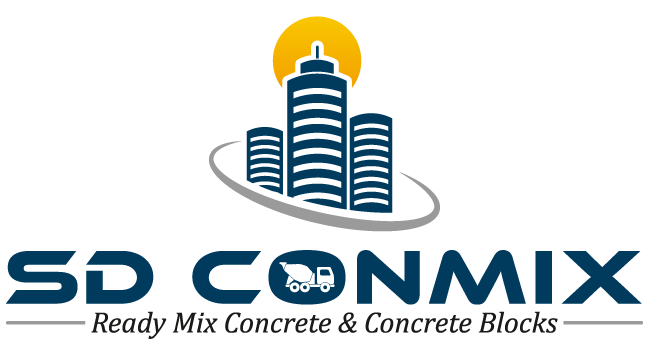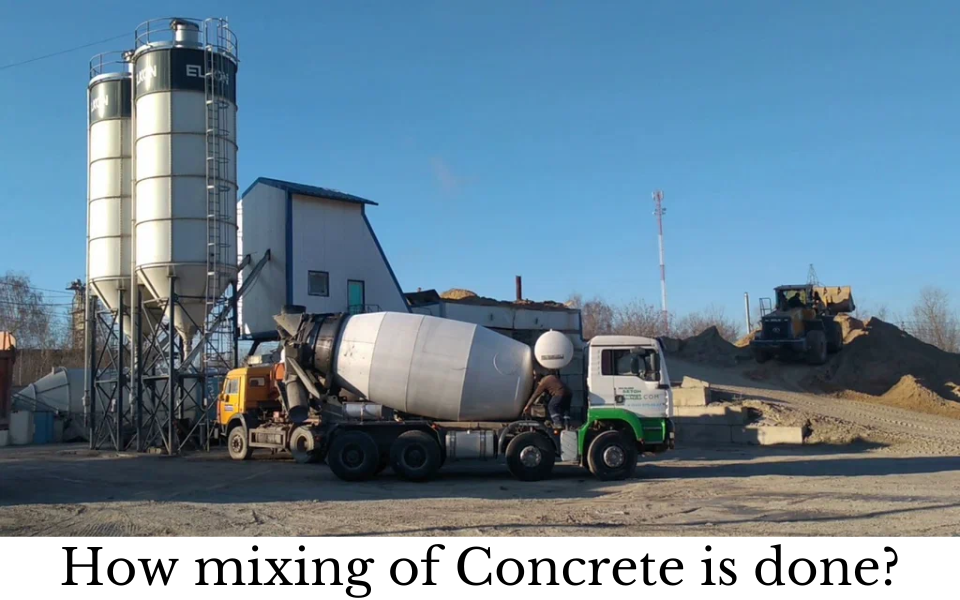Introduction
Concrete mixing refers to the process of mixing the materials necessary for the formation of concrete. These materials include cement, sand and aggregate, water and adhesives (if applicable). The main purpose of mixing concrete is to ensure that the concrete mass is homogeneous and uniformly coloured while maintaining the desired consistency. All aggregate particles must be covered with cement paste. All of the concrete constituents must be mixed together to form a homogeneous mass. This process is so important that if the ingredients for concrete-making are not mixed correctly, it can result in weak concrete sections which can cause concrete failure under pressure. Therefore, it is important to take appropriate precautions when mixing concrete.
The following methods are the ones that are frequently used for concrete mixing and are equally popular
- Hand Mixing of Concrete
- Machine Mixing of Concrete
Let us understand these two methods
For small-scale, insignificant concrete works, hand mixing of concrete is a viable option. However, due to the inferior quality of the material mix produced by machine mix, it is recommended to add an additional 10 per cent of cement to the mix.
When hand mixing concrete, the material should be spread out in alternate layers of the sufficient or measured quantity, with a shovel to mix the dry material with a suitable tool. Water should then be added to the mix, and the mixing process should be continued until a homogeneous mixture is achieved.
It is important to note that no additional water should be added to concretes, and the maximum amount of water should be used. Once the concrete is properly mixed, it should be ready to use.
In the case of large-scale construction, concrete mixing is typically performed solely by machines, particularly for reinforced concrete applications, and for medium-to-large-scale mass concrete applications. Combining concrete in a mixer is both efficient and cost-effective when the amount of concrete to be manufactured is substantial.
Ready mix concrete is blended and transported to the location/site specified by the buyer/seller through one of the following operations
a) Central Mixed or Stationary mixed Concrete
Central mix plants are also known as wet batch plants or pre-mix plants. Concrete that has been mixed in a fixed mixer at the plant completely mixes the concrete before it is discharged into either truck agitators or truck mixers operating at an agitating speed or in non-agitating equipment agreed upon by the buyer/user.
When transporting concrete that has been mixed prior to being discharged from the plant, when truck mixers or agitators are used, the concrete is agitated during transit to re-mix at the site at least for 2 minutes to ensure uniformity.
b) Shrink Mixed Concrete
Concrete that is partially mixed in the stationary mixer and then completely mixed in the truck mixer. The partial mixing time is the minimum time needed to mix the ingredients. Once transferred to the truck, the amount of mixing performed at the specified mixing speed will be the amount required to meet the uniformity requirements for concrete. In most cases, it is 2 minutes of mixing in the truck drum at the required mixing speed. We do not practice this.
c) Truck mixed concrete
While truck-mixed concrete is one of the mixing methods for Ready Mixed Concrete (RMC), for the purposes of this Chapter, truck-mixed concrete cannot be considered as RMC because automatic record-keeping arrangement (e.g., digital computer slips etc.) is not possible in this mixing method.
Conclusion
Concrete Mixing is one of the most important steps in the concrete-making process. By properly mixing concrete, you can create concrete that is durable, strong, and consistent. For quality ready-mix concrete, trust SD Conmix – the house of quality concrete products.
FAQs
The common method of expressing the proportions of ingredients of a concrete mix including ready-mix concrete is in terms of parts or ratios of cement, fine and coarse aggregates.
The safest bet for any concrete mix is four-two-one: four parts crushed rock; two parts sand; and one part cement.
The M25 concrete ratio, which denotes the proportion of cement, sand, and aggregate, is 1:1:2.
M20 grade concrete has a notional cement-to-sand-to-aggregate-to-water ratio of roughly 1:1.5:3, with the water-cement ratio being kept between 0.4 and 0.6. It is composed of a mixture of cement, sand (fine aggregates), and coarse aggregate.

